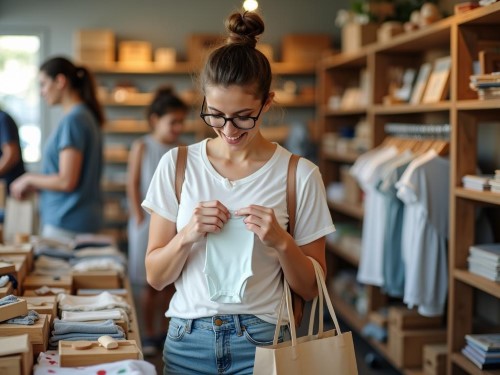Second-Hand Shopping Tips for Moms

Being a mom comes with a lot of responsibilities—and expenses! Between clothing, toys, baby gear, and household necessities, costs can quickly add up. That’s why second-hand shopping is a game-changer for budget-conscious moms. Not only does it help you save money, but it’s also a more sustainable and eco-friendly choice. Here’s how you can master second-hand shopping while ensuring quality and safety for your family.
1. Know What You Need Before You Shop
Walking into a thrift store or browsing an online marketplace without a plan can be overwhelming. Before you shop, make a list of the essentials your child currently needs. Prioritize items like seasonal clothing, shoes, educational toys, or larger investments like strollers and cribs.
2. Choose the Best Platforms for Second-Hand Finds
There are numerous ways to find high-quality second-hand items. Consider these options:
- Thrift Stores & Consignment Shops: Great for clothes, books, and baby gear.
- Online Marketplaces: Platforms like Facebook Marketplace, eBay, and Kidizen offer great deals.
- Community Sales & Mom Groups: Check local mom groups for swap events or yard sales.
- Charity Shops: Some nonprofit thrift stores have well-maintained, high-quality items.
3. Inspect Items Carefully
When shopping second-hand, always check for:
- Stains, rips, or excessive wear on clothing
- Broken zippers or missing buttons
- Safety recalls (especially for car seats and cribs)
- Odors, pet hair, or signs of mold
If shopping online, ask the seller for multiple photos or detailed descriptions to avoid surprises.
4. Be Mindful of Safety Standards
Certain baby items, like cribs and car seats, have strict safety regulations. Always research the latest safety guidelines and avoid buying outdated or recalled products. If buying a second-hand car seat, ensure it hasn’t been in an accident and check the expiration date.
5. Look for High-Quality Brands
Some brands are known for their durability, making them great second-hand purchases. Look for trusted names in baby gear, shoes, and clothing that hold up well over time.
6. Negotiate Prices When Possible
In many cases, sellers are open to negotiations. If you’re buying multiple items from one person, ask for a discount. However, always be respectful and reasonable when making offers.
7. Know When to Splurge vs. Save
While second-hand shopping is a great way to save money, some items are worth buying new. For instance, undergarments and mattresses should typically be bought new for hygiene reasons. On the other hand, winter coats, dress shoes, and wooden toys are excellent second-hand investments.
8. Wash and Sanitize Everything
Before using second-hand items, thoroughly wash and sanitize them. Use gentle detergent for clothes and baby wipes for toys. For plastic items, a mix of vinegar and water can effectively disinfect surfaces.
9. Buy in Advance for the Next Season
Kids grow fast! When you find a great deal on clothing a size up, consider buying it for the next season. This way, you avoid last-minute full-price shopping sprees.
10. Join a Buy/Sell/Trade Community
Local and online groups dedicated to buying, selling, and trading children’s items can be a goldmine. You can score great deals, swap items with other moms, and even sell things your child has outgrown.
Join the Frugalistic Community!
Second-hand shopping is a smart and sustainable way to save money while providing the best for your family. Want to learn more insider tips, swap stories with other budget-conscious moms, and discover the best second-hand shopping hacks? Join our Frugalistic Community today and take your savings game to the next level!